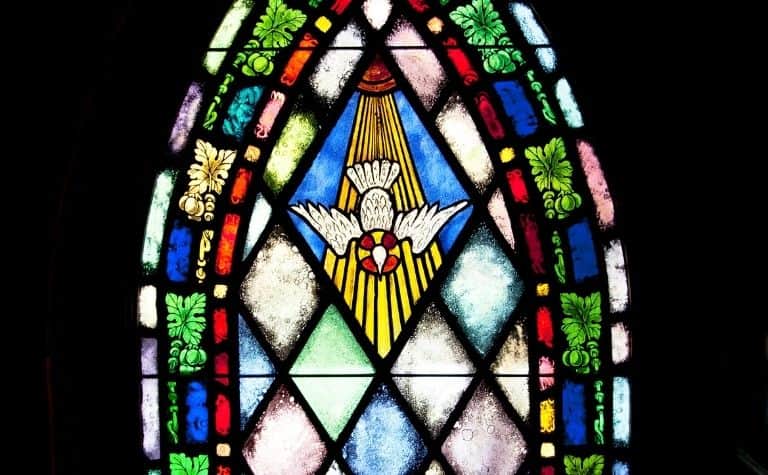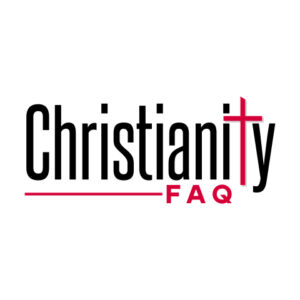The Presbyterian and Episcopalian traditions are Protestant branches of the Christian faith that originated in 16th-century Europe. These denominations have much in common, especially when contrasted with Roman Catholicism. Presbyterians and Episcopalians don’t agree on all matters of faith and practice.
Presbyterians and Episcopalians agree on doctrines like the Trinity, the inspiration of Scripture, and the death and resurrection of Jesus Christ. Regarding Catholicism, neither recognizes the papacy. Presbyterianism is truly Protestant, while the Episcopalian Church is a middle way between Catholic and Protestant.
Why is the Episcopalian tradition considered halfway between Catholicism and Protestantism? Is the Episcopalian church related to the Church of England or the Anglican Church? Is the Episcopalian church Calvinist like the Presbyterian church? Keep reading to learn more.
Also, see Presbyterian vs. Pentecostal: What’s the Difference? to learn more.

Presbyterian and Episcopalian: What’s In a Name?
Many people know that the terms “Presbyterian” and “Episcopalian” describe Christian traditions or denominations but don’t know the exact meaning of each word.
Unlike Lutheranism, which is named after its founder, Martin Luther or Baptist, which is named after an ordinance they practice, the terms Presbyterian and Episcopalian are related to a church office. (Also see Presbyterian vs. Anglican: What’s the Difference?)
What Does Episcopalian Mean?
The terms Episcopalian, Church of England, and Anglican are often used synonymously, though each term is partially unique. The terms generally refer to the same historic branch of Christianity. In narrow use, history, and geography nuance their meaning.
| Term | Meaning |
|---|---|
| Episcopalian | The term refers to the Protestant branch Henry VIII and his successors established in England in the 16th century. In America during the Revolutionary War, church members increasingly identified themselves as “Episcopalian” because of tension between the Americans and English. |
| Church of England | The term refers to the Protestant branch Henry VIII and his successors established in England in the 16th century. In America during the Revolutionary War, church members increasingly identified themselves as “Episcopalian” because of tension between the Americans and the English. |
| Anglican | From the Latin phrase ecclesia anglicana, the term means the “English Church.” This term is less common in America. “Episcopalian” denominations and churches are considered part of the worldwide “Anglican” communion. |
The Church of England experienced a crisis in the United States during the American Revolution. The tradition had been present in the country since its first church was established on American soil at Jamestown, Virginia, in 1607.
Many Americans who supported and led the war effort against the British belonged to the Church of England, including George Washington. After the war, representatives met to establish a denomination independent of the Church of England.
What does Presbyterian mean?
The term “Presbyterian” has a broad use and a narrow use. In general, the term refers to the tradition of Protestant Christianity or certain aspects of it, especially its form of church government.
| What does “Presbyterian” mean? | |
|---|---|
| Broad use | In common usage, the term “Presbyterian” refers to a Christian tradition or denomination that traces its roots to French Reformer John Calvin (1509-1564) and is “Calvinist” in theology. |
| Narrow use | In a narrower use of the term — and the origin of the of the denominational name — “Presbyterian,” from the Greek word for “elder,” refers to a form of church government that is elder-led. |
Also, see What Do Presbyterians Believe? to learn more.

Presbyterian and Episcopalian: Overview
King Henry VIII of England and pastor-theologian John Calvin of France each protested the abuses they perceived in the Catholic church in 16th-century Europe.
Henry and Calvin didn’t necessarily rebuke the same abuses and their protests varied in expression. Nevertheless, each started a movement that impacted the Christian faith, the European continent, and America.
| Episcopalian tradition | Presbyterian tradition | |
|---|---|---|
| Origin | King Henry VIII (1491-1547), | John Calvin (1509-1564), 16th century France |
| Early contributors | King Edward VI (1537-1553), Queen Elizabeth I (1533-1603), theologian Richard Hooker (1554-1600) | Pastor and theologian John Knox (1514-1572), 16th century Scotland |
| Important literature | The Book of Common Prayer, the 39 Articles of Religion | The Westminster Confession of Faith of 1647 |
| Organization | Churches mostly exist in “communions.” The historic succession of bishops is highly valued; priests and deacons are the other offices in the church. | Calvin taught that there are elders who preach and teach and other elders who help rule over the church. Elders in a local church comprise a session. Elders in the same geographical location form a presbytery. Groups of presbyteries form a synod. |
| Theology | The church ultimately moved away from early Calvinist influences to the dismay of the Puritans. It adopted a middle way between Catholicism and Protestantism. | Presbyterianism is a Protestant denomination and rejects several key Catholic beliefs and practices. It emphasizes doctrines like Covenant Theology, predestination, and the Lord’s Supper and baptism. In relation to theology proper, it emphasizes God’s glory, providence, and sovereignty. |
| Social worldview today | It depends on the communion. The “Episcopal Church,” the largest communion in the U.S., is socially and theologically liberal. | It depends on the denomination. The Presbyterian Church USA (PCUSA) welcomes liberal and progressive theological positions and social causes. The Presbyterian Church in America (PCA) maintains conservative positions on theological and social matters. |
The Episcopal (or Anglican) and Presbyterian traditions had significant interaction early in their histories. Significant examples include Knox’s work on The Book of Common Prayer and the Puritans’ attempt to influence doctrine in the Anglican church.
Neither Knox nor the Puritans committed to the Anglican church after Hooker finalized the beliefs and practices of the institution.
Also, see Presbyterian vs. Lutheran: What’s the Difference? to learn more.

Presbyterian and Episcopalian: Theological Comparison
In general, Episcopalians and Presbyterians find agreement on certain doctrines, like the Trinity.
However, because some Episcopal churches implement traditionally Catholic practices, the best comparison is denomination-to-denomination, church-to-church, or even member-to-member. Nevertheless, a broad overview can help get a person started on understanding the two traditions.
| Episcopalian tradition | Presbyterian tradition | |
|---|---|---|
| Theology (broad) | Often considered halfway between Catholic and Protestant | Truly Protestant |
| Theology (narrow) | Some communions and churches appear more Catholic in belief and practice, while others appear more Protestant. | Presbyterians are Calvinists. They emphasize the authority of Scripture, Covenant Theology, predestination, Presbyterian church government, and communion and baptism. |
| View of the Bible | The “low church” (see below) has a high view of Scripture. The “high church” values Scripture plus ecclesiastical tradition. | Presbyterians believe in the inspiration and authority of Scripture. Many conservatives accept and defend the terms “inerrancy” (i.e., Scripture has no errors) and “infallibility” (i.e., Scripture can’t lead astray in belief or practice). Moderate-liberal denominations read and teach Scripture selectively. |
| View of God | Episcopalians believe in the Trinity; there is one God who exists in three persons. The Father, Son, and Holy Spirit are each fully divine. | Presbyterians believe in the Trinity; there is one God who exists in three persons. The Father, Son, and Holy Spirit are each fully divine. |
| View of Christ | Jesus is the second person of the Trinity. He is God in human flesh. He is 100% God and 100% man. Jesus was born of a virgin, lived a sinless life, died as an atonement for sin, and was physically resurrection on the third day. | Jesus is the second person of the Trinity. He is God in human flesh. He is 100% God and 100% man. Jesus was born of a virgin, lived a sinless life, died as an atonement for sin, and was physically resurrection on the third day. |
| View of Salvation | Historical roots are closer to Calvinism than Arminianism. Today, liberal communions are ecumenical and inclusive of other religions. | Jesus Christ is the only way to be saved. As Calvinists, Presbyterians believe in predestination, holding that God has selected some, but not others, for salvation. |
| View of the Holy Spirit | The Holy Spirit is the third person of the Trinity. He is fully divine. Episcopalians are historically cessationist, yet some small communions practice charismatic worship (e.g., International Communion of the Charismatic Episcopal Church). | The Holy Spirit is the third person of the Trinity. He is fully divine. Episcopalians are historically cessationists, yet some small communions practice charismatic worship (e.g., International Communion of the Charismatic Episcopal Church). |
| View of the Ordinances | There are two: baptism and the Lord’s Supper or communion; they don’t automatically convey grace. | There are two: baptism and the Lord’s Supper or communion; they don’t automatically convey grace. |
| View of the Lord’s Supper | The exact nature of the Lord’s Supper is a mystery. | Presbyterians believe Christ is spiritually present in the bread and cup. The elements aren’t merely symbols or reminders. |
| View of the Baptism | Clergy baptize infants and adults; baptized individuals are “grafted into the church.” | Presbyterians practice infant baptism (and adult baptism) through sprinkling. Baptism signifies inclusion into the Covenant community. |
| View of the end times | Amillennial | Amillennial |
Also see: What Bible Translation Do Presbyterians Read? to learn more.
Presbyterian and Episcopalian Denominations
The largest Presbyterian denomination is the Presbyterian Church (USA). In recent decades, disagreements over social issues like same-sex marriage have split churches in the denomination. (Also see Presbyterian Church USA vs. Presbyterian Church in America: What’s the Difference?)
| Presbyterian Denominations | Reported Membership |
|---|---|
| Presbyterian Church (USA) | 1.7 million |
| Presbyterian Church in America | 370,000 |
| Evangelical Presbyterian Church | 150,000 |
| ECO: A Covenant Order of Evangelical Presbyterians | 100,000 |
The largest denomination in the Episcopal tradition is the Episcopal Church. While some pockets of conservatism remain in the denomination, liberal and progressive viewpoints have largely prevailed in reforming doctrine and practice in most churches.
| Episcopal Denominations | Reported Membership |
|---|---|
| Episcopal Church | 2 million |
| Anglican Church in North America | 112,000 |
| Continuing Anglican Churches | 100,000 |
| Reformed Episcopal Church | 15,000 |
Also see: Christian Denominations Comparison Chart to learn more.
Please see the related articles below.
References:
[1] Source
[2] Source
[3] Source
Related Questions
Presbyterian and Pentecostal traditions are two of Protestant Christianity's most important and influential branches. While they agree on several essential biblical doctrines, they differ on certain...
The Roman Catholic and Presbyterian branches of the Christian faith trace their origins to Jesus of Nazareth and his apostles, as well as their writings that comprise most of the New Testament. There...
